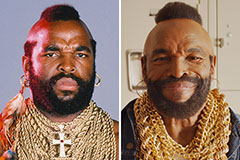Exploring the Basic Principles and Finest Practices of Reliable Website Design for Boosted Customer Experience and Involvement

Significance of User-Centered Design
User-centered design (UCD) offers as a keystone of efficient web design, emphasizing the need of tailoring digital experiences to fulfill the needs and preferences of users. By focusing on the individual's point of view, UCD makes sure that websites are not only useful yet likewise intuitive and interesting.
The value of UCD lies in its capacity to enhance user complete satisfaction and retention. When users locate a site easy to browse and aligned with their assumptions, they are most likely to return and suggest it to others. This method cultivates a deeper psychological connection, allowing brand names to develop trust fund and loyalty amongst their audience.
Furthermore, UCD facilitates the identification of customer pain factors via research study and screening, allowing designers to resolve these problems proactively. By involving individuals in the design process, whether with meetings, surveys, or functionality screening, designers get beneficial insights that notify much better decision-making.
Inevitably, the implementation of UCD not only boosts the total user experience however likewise drives quantifiable organization outcomes. Web sites that welcome user-centered techniques tend to see higher conversion rates and enhanced efficiency metrics, highlighting the critical role of UCD in contemporary website design.
Key Style Principles
Efficient internet style is based in key design principles that enhance usability and aesthetic appeal, further building on the foundation established by user-centered design. These principles include consistency, aesthetic hierarchy, and feedback, which with each other create an intuitive user experience.
This familiarity aids individuals navigate and understand the user interface with convenience, strengthening brand identification. Visual pecking order, achieved with color, positioning, and size, overviews individuals' focus to the most essential web content, making information a lot more easily accessible and engaging.

Integrating these vital layout concepts fosters a harmonious mix of performance and looks, ultimately resulting in boosted individual fulfillment and engagement. By sticking to these foundational principles, developers can create internet sites that not only look appealing however also supply a delightful and effective user experience.
Ideal Practices for Functionality
Use is a keystone of successful internet layout, including a range of methods that boost the general experience for customers. To achieve ideal usability, it is important to prioritize user-friendly navigating. Clear menus and sensible pathways enable customers to discover info quickly, minimizing disappointment and raising complete satisfaction.
In addition, employing consistent style elements, such as color design and typography, fosters familiarity and alleviates navigating. Users ought to not have to relearn exactly how to interact with different sections of the site. Moreover, making certain that your website is responsive across different tools is crucial, as a boosting variety of customers access content on smart phones.
An additional ideal technique entails including access functions, such as alt message for pictures and keyboard navigation alternatives, to suit customers with varied requirements. Evaluating usability through customer responses is invaluable, as real-world insights can reveal unforeseen issues and locations for improvement.
Enhancing Aesthetic Power Structure
A distinct aesthetic pecking order is vital for leading customers with a web site, allowing them to promptly determine the significance of various aspects on a page. This can be achieved via the critical usage of size, contrast, shade, and spacing (web design Johannesburg). Bigger elements normally draw focus initially, making headlines or key phone call to activity much more prominent
Shade can also play a substantial duty in establishing pecking order; for circumstances, utilizing a vibrant color for buttons can aid them stick click for more out against a much more low-key background. Furthermore, comparison between text and history is vital for readability, making sure that customers can easily navigate material without stress.
Whitespace, or adverse space, is another crucial facet of visual pecking order. It gives breathing space around aspects, assisting to team related things and assisting the customer's eye from one section to another. By successfully using these layout concepts, internet developers can develop a smooth customer experience that boosts involvement and lowers cognitive lots.
Inevitably, an attentively built aesthetic pecking order not just enhances functionality however likewise cultivates an extra instinctive communication with the web site, bring about greater satisfaction and retention prices amongst customers.
Adaptive and responsive Design
Visual power structure plays a substantial duty in customer experience, and its efficiency should extend across numerous gadgets and screen sizes. Adaptive and receptive style are two vital methods to achieving this objective. Receptive style utilizes fluid grids, flexible images, and media inquiries to readjust the format and material dynamically, guaranteeing that individuals enjoy a seamless experience no matter the tool. This method permits for a single codebase, streamlining upkeep and updates while enhancing uniformity across systems.
In comparison, flexible design makes use of distinct designs customized to details screen dimensions. By finding the user's gadget and offering an optimized design, flexible design can supply an extra tailored experience. This typically calls for multiple versions of the exact same web content, which can make complex management and increase advancement time.
Both approaches have their benefits, and the option in between them depends on job needs, target market, and source availability. Eventually, the objective is to produce an interesting, user-friendly user interface that maintains aesthetic pecking order and use throughout all platforms. A well-implemented responsive or adaptive layout not only enhances official website customer experience but additionally encourages greater interaction and retention prices, crucial for the success of any kind of internet task.
Conclusion
To conclude, effective website design depends upon discover this info here the combination of user-centered concepts and ideal practices that boost overall experience and engagement. By prioritizing usability with user-friendly navigating, aesthetic power structure, and receptive layouts, designers can produce systems that deal with diverse user demands. Moreover, the unification of accessibility functions and regular layout aspects makes certain a smooth communication throughout gadgets. Emphasizing user feedback and visual considerations ultimately fosters contentment, retention, and improved performance in the electronic landscape.
In the rapidly advancing digital landscape, recognizing the fundamental concepts and ideal methods of reliable web style is paramount for cultivating enhanced customer experience and involvement - web design Johannesburg.Usability is a keystone of successful internet design, incorporating a variety of practices that boost the total experience for individuals. By efficiently employing these design concepts, web designers can develop a smooth user experience that improves interaction and lowers cognitive lots
Responsive design utilizes fluid grids, flexible photos, and media queries to adjust the layout and material dynamically, making certain that users enjoy a seamless experience regardless of the gadget. A well-implemented receptive or flexible layout not just boosts user experience but likewise motivates higher interaction and retention prices, important for the success of any kind of internet task.
 Mr. T Then & Now!
Mr. T Then & Now! Michael J. Fox Then & Now!
Michael J. Fox Then & Now! Judge Reinhold Then & Now!
Judge Reinhold Then & Now! Andrew Keegan Then & Now!
Andrew Keegan Then & Now! Karyn Parsons Then & Now!
Karyn Parsons Then & Now!